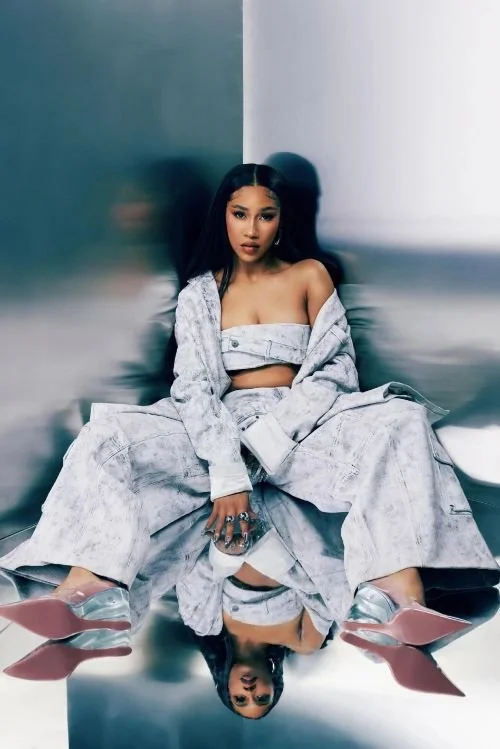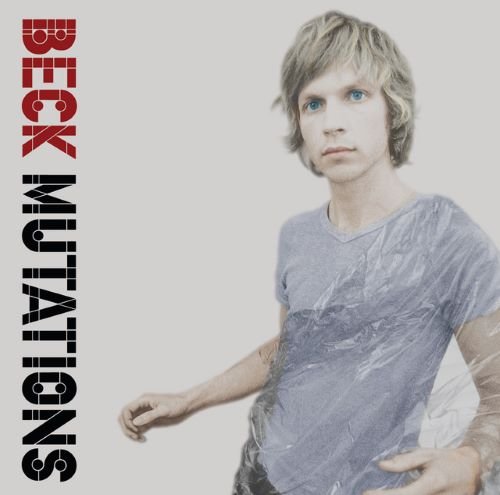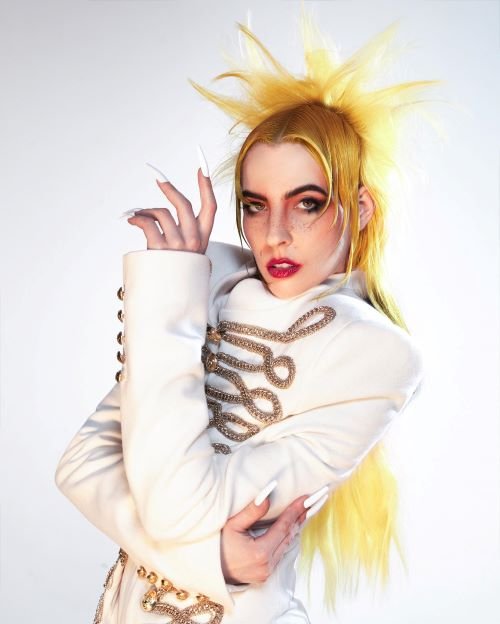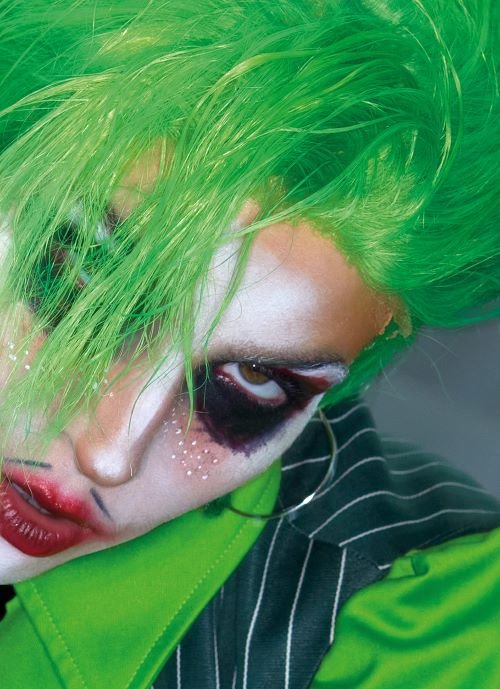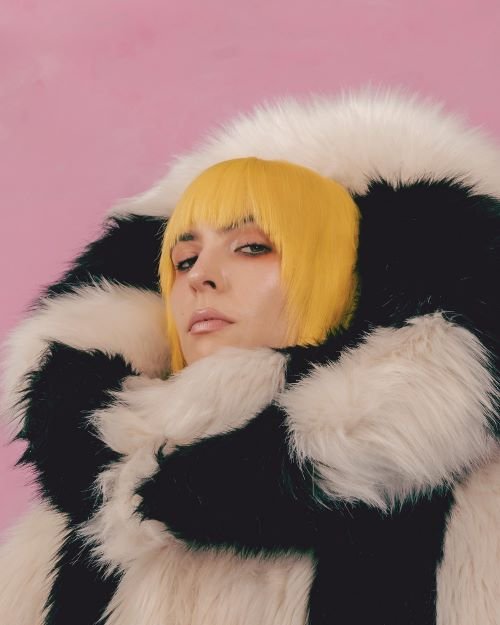FEATURE:
When Numbers Get Serious
Paul Simon’s Hearts and Bones at Forty
_________
A little under three years before…
IN THIS PHOTO: Paul Simon with Carrie Fisher circa 1983 (the pair married in August 1983)/PHOTO CREDIT: Jean Jacques Lapeyronnie/Getty Images
the mighty Graceland was released, Paul Simon gave us the amazing Hearts and Bones. His sixth solo studio album, I think it simultaneously one of his most underrated and one of his absolute best. If albums like Graceland and Still Crazy After All These Years (1975) find its songs get more airplay, one cannot deny the excellence of Hearts and Bones. Its standout track (in my view), René and Georgette Magritte with Their Dog after the War, shows the master was at his peak. This phenomenal album was produced by Roy Halee, Paul Simon, Russ Titelman and Lenny Waronker. I think one reason why Hearts and Bones gets overlooked to a degree is that it wasn’t a massive commercial success. That would change with 1986’s Graceland….yet Hearts and Bones just got into the top forty in the U.S. and U.K. Maybe the lack of real instant standout singles means it is more for those who want depth and nuance, rather than something instantly catchy or that lodges in your brain. A woe that all artists have to face. I am going to introduce some features that shine a light on a magnificent album. With plans to work on new material with Art Garfunkel and perhaps affect some sort of unexpected reunion, Hearts and Bones instead became a Paul Simon solo work. One that is among his most important. You can buy the vinyl of this essential work from one of the greatest ever songwriters. In 2015, Ultimate Classic Rock ran a feature on Hearts and Bones. A commercial slide, Hearts and Bones did not get the acclaim and respect it deserved:
“For a good long while, everything Paul Simon touched turned to gold or platinum, first during his years as one-half of Simon & Garfunkel, and continuing through a string of successful solo albums. But by the early '80s, he'd hit a bit of a rough spot.
The seeds of Simon's dissension were sown in the late '70s, when he left his longtime home at Columbia Records and headed to Warner Bros. as part of a wildly expensive deal (one which roughly coincided with Columbia's poaching of a high-profile Warners artist, James Taylor). With the pop world at his feet and limitless record company resources to work with, Simon set about creating his most ambitious project yet: 1980's One Trick Pony, an album as well as a film starring Simon.
Rather than continuing his incredible streak of success, Pony was met with middling reviews and consumer indifference, knocking Simon into a painful period of writer's block that presaged his decision to reunite with his former partner Art Garfunkel for 1981's historically attended concert in Central Park – which then became a full-fledged tour, and was supposed to lead into a reunion album.
That project went through a series of changes before it finally arrived in stores on Nov. 4, 1983. Originally titled Think Too Much, it eventually morphed into Simon's sixth solo effort, Hearts and Bones – and Garfunkel was nowhere to be found.
As it turned out, Garfunkel quit fairly early in the recording process. In a 1984 interview with Playboy, Simon professed to have had misgivings from the beginning, recalling, "At first I thought, 'I really can't do it: These new songs are too much about my life to have anybody else sing them.' He had, 'Look, these aren't the events of my life, but I understand the emotions you're dealing with. I understand what it is to be in love, to be in pain, to feel joy. I'm a singer. I'm able to interpret. That's what I do.' I said, 'All right. Let's try.'"
Ultimately, though, Simon's need for complete creative control drove a wedge between the two partners, with one of the final breaks coming when Garfunkel said he wanted to record his vocals without Simon in the studio. "I wanted to be there when it happened, because I knew that if what he did wasn't all right with me, I wasn't going to let it go," explained Simon. "And that was the difference from the '60s. What we didn't realize at first was how big a difference it was. It was huge."
As Hearts and Bones made clear, Simon had certainly evolved from the artist he'd been during the '60s, and not always in a way his fans were prepared to accept. While he'd always striven to avoid writing lyrics that were "too on the nose," as he'd put it, the songs on Bones found him drifting into more abstract territory. Although he was still addressing timeless subjects like love and death, he was doing so from angles that weren't always easy to discern. In the eyes of some listeners and critics, the onetime voice of a generation had lost sight of his muse.
The result was another commercial setback for Simon, albeit one that proved short-lived – and also crucial, because the resulting disinterest from the label afforded Simon the level of creative freedom he needed to travel to South Africa for the sessions that produced 1986's landmark Graceland LP. By the end of the decade, he was once again one of the biggest and most highly respected rock stars on the planet.
At the time, it may have seemed like one of his lesser efforts, but time's been good to Hearts and Bones. Today, it's not only regarded as the prelude to Simon's second wind, but one of the more finely crafted records in a catalog with no shortage of classic efforts. Like he pointed out on one of his earlier songs: "You got to learn how to fall / Before you learn to fly”.
I will come to a review soon. A few years ago, American Songwriter published the first part of a feature highlighting the underappreciated genius that is Hearts and Bones. I will not include it all, though there are elements and sections of the first part that I wanted to include. In the hope of highlighting what a vital thing Hearts and Bones is. Perhaps an album whose sound did not fit in with the landscape of 1983:
“Each of the songs included, coming as they did from the heart and mind of this songwriter, contained multitudes. It would have been easier to write a book about each one than to condense all of it into the liner note limits. There was ample space offered for this, printed in a long vertical book that came with the set. But it wasn’t limitless, essentially, which was a problem at first.
For example, “Rene and Georgette Magritte (With Their Dog After The War).” It’s a song which is a universe unto itself. Quickly I had amassed thirty pages all on this one song. All of which added up, admittedly, to what Dylan called “too much and not enough.” That with all this thinking, writing, analysis, reflection and certainty, I’d written circles around this thing without getting to the main point.
Yet one truth remains, which is that the greatness of this album has not diminished. But what has changed is the judgment of it in the world. I’ve since come to know so many great songwriters who revere Simon, and they love this album as much as any of them. And do so, usually, without any knowledge of its reputation.
And so the work continues, to explore, study, analyze, bask in its glories, obsess even, and continue to sing the praises of Hearts and Bones. And all those albums that were great and somehow fell prey to the Heaven’s Gate effect.
[This can also be called the Ishtar effect, another great movie that got rained on. For songwriters, especially, it is one of the best, and funniest movies about songwriters. Paul William’s intentionally bad songs for it are genius.)
Though overtly expressing personal reasons for loving an album is something I’ve avoided almost always through the decades, for this I must take a different route. Because how songs resonate in our own lives, and albums, has a lot to do with how they exist in our lives, and why they matter so much to us.
Writing about music, as has been famously said, is about as useful as dancing about architecture. Words alone can never entirely fully express that which is instrinsically beyond words. That is why music is so powerful, and why it’s been said that all arts aspire to the level of music.
So any attempt to truly touch that realm with words alone is bound to fail, Some get closer than others. Yet even this writer’s admitted use of intentional hyperbole, which is not phony but an accurate expression of my genuine reverence for miraculous songwriting has been perceived as “gushing.” As if it is phony. It isn’t. Yet those behind the words are expected to use more restraint, so as to be taken seriously. But never did I want to play that game, as that would be phony, to pretend I wasn’t in utter awe.
Certainly this deep reverence came from a lifelong hunger to hear new music, which would be received with much gratitude and joy. In my life growing up, few things were ever as inspirational or enriching as getting a new album. Back then we had no computers or cell phones or even TVs in our rooms. But we had record players, and that is what mattered to me. Any album at all that came into my life was momentous. It brings home the understanding that how much songs matter in our lives has to do entirely with how we receive them, and if we choose to keep them in our lives.
As Leonard Cohen said when I asked him about the concept of meaningful songs, that meaning is determined not be the song or the songwriter, but by the listener.
He said there will always be meaningful songs for those who attach them to meaningful moments in their own lives. Even those songs we might consider unworthy.
“Songs do not dignify human activity,” Leonard said. “Human activity dignifies the song.”
So that is an expansive introduction to the main subject, about why certain albums for us forever impact us. In Part 2 we will get to the heart of the thing, and yes, also the bones, of why Paul Simon’s greatest underappreciated album is great”.
I am going to round things off with a review from Music Aficionado. Quite an extensive review from 2017, I am going to include a fair bit from it. There will be a lot of people who might not know about Hearts and Bones. Not realise why it is so good and warrants acclaim. As it is forty on 4th November, I wanted to spend some time with it:
“Paul Simon often expressed his love and appreciation for 1950s music. Talking to Paul Zollo: “Early fifties music had a different kind of melody, more melodic. But then you’re closer to the age of melody. Because the big band era and post-war, what was still all about melody. The days of Irving Berlin and all those great songwriters was about melody. Nobody comes close to writing melodies like they did. Nobody.” To Playboy magazine in a 1984 interview: “Actually, I’m a rock-‘n’-roll kid. I grew up with rock’n’roll. My main influences in early music were Fifties R&B, Fifties doo-wop groups, Elvis Presley and the Everly Brothers. But Simon and Garfunkel was a folkie act. I liked the blend of our voices, but a significant part of me just wasn’t a folkie. What we were doing was too sweet. I was too serious. When I began making my own albums, the songs became funkier. They were more about the streets.”
Like Hearts and Bones, The Late Great Johnny Ace offers interesting twists in the song structure. The part that starts with “and the music was flowing” is unexpected and adds additional drama to the lyrics. But even more unexpected is the coda at the end of the song written by Philip Glass and performed by a small ensemble conducted by Michael Reisman. Glass completed his soundtrack to Godfrey’s Reggio’s film Koyaanisqatsi not long before The Late Great Johnny Ace was recored, and you can hear similarities between the coda and Pruit Igoe, one of the tracks in the film. Paul Simon: “His use of what he calls an “end piece” — a short coda which does not recapitulate the melodic lines of the larger preceding piece — is an idea that he used beautifully to conclude my song “The Late Great Johnny Ace.” That end piece concept has found its way into my arrangements for live shows, as the band plays a related but original addition to a song, allowing me to shape endings to sequences of songs, or to set the environment for the next tune.”. A few years later the two would collaborate again on Philip Glass’s album Songs From Liquid Days, Simon contributing lyrics to the track Changing Opinion. After a while the coda becomes such a part of the song that you feel its absence in the demo version Simon recorded while working on the album:
If you stuck with my post thus far you reached the best part, for my favorite song on the album and in all of Paul Simon’s rich catalog of wonderful songs, is Rene and Georgette Magritte with Their Dog After The War. Simon is at the top of his game here with lyrics as surrealistic as Magritte’s paintings. When asked if his lyrics can stand alone, Simon told Playboy in 1984: “Maybe on this new album, where the lyrics are my best.” In the Cinemax 1984 TV special Simon talked about the song: “That was unusual for me in the way the song was formed. I was at a friend’s house, actually it was Joan Baez. We were rehearsing at her house and she had to take a phone call, and while she was on the phone I was leafing through this book on Magritte. There was a photo of Magritte and his wife Georgette and the caption of the photo said Georgette and Rene Magritte With Their Dog During The War. And I thought that is a very interesting title for a song. A few days later I was driving along in Montana and I was singing the title except I remembered it as Rene and Georgette Magritte With Their Dog After The War. I began to sing a melody that fit the syllabification.” A similar story in which a song title jumped at him is famously recalled in a Rolling Stone interview, where he sat in a Chinese restaurant and a menu item titled a chicken-and-egg dish as “Mother and Child Reunion”.
Rene and Georgette Magritte with Their Dog After The War may be the best example of the new quality and direction Simon took with his lyrics around that time. In a 1990 interview with SongTalk magazine he said: “The language starts to get more interesting in Hearts and Bones. The imagery started to get a little interesting. What I was trying to learn to do was to be able to write vernacular speech and then intersperse it with enriched language. And then go back to vernacular. So the thing would go along smoothly and then some image would come out that was interesting and then it would go back to this very smooth, conversational thing. By the time I got to Graceland, I was trying to let that kind of enriched language flow naturally, so that you wouldn’t really notice it as much. I think in Hearts and Bones you could feel it, that it was coming.” In the booklet that accompanies the box set 1964/1993 Simon mentions some of the lines from the song: “I consciously came up with the part about “all their personal belongings” becoming intertwined. But the line in the bridge, “decades gliding by like Indians,” just emerged from nowhere while I was running in Central Park.”
Simon added interesting insights into the writing process and how he picked the words to the song by analyzing a few lines in an interview with Bill Flanagan, featured in the book Written In My Soul:
Returned to their hotel suite and they unlocked the door. Well, it’s just the same rhythm and it’s a rhyme. War/door. And when they open the door, it opens the song. You can go anywhere now. They’ve unlocked the door! So what happens?
Easily losing their evening clothes. That’s a just the way that it sings – the EEE OOO EEE OOO sound. e-sily loo-sing e-v’ning clo. There’s a dreaminess to that sound. And the words are also evocative. I know it works because the sound is right and the picture is interesting. Where are we going from here?
They danced by the light of the moon. Here comes the leap: To the Penguins, the Orioles, the Five Satins. I didn’t think people would know the groups I picked. Unless they are as old as I am. But the names of those groups have a surreal quality to them. You don’t even know if they are groups, but the sounds are right. And penguins and moonglows and orioles could all be in a Magritte painting.
The deep, forbidden music They’d been longing for. Well, that’s rock & roll, and the early feeling rock & roll touched in you, because it was real. Back then it was forbidden.
René and Georgette Magritte With their dog after the war Were strolling down Christopher Street When they stopped in a men’s store. Well that’s a joke. What else is there going to be on Christopher street? It’s the center of the gay community in the US. I thought it was as interesting as any other place for them to be.
The easy stream of laughter Flowing through the air. Then I must have thought, where’s my rhyme? Oh I have a good joke. I’ll go to the French.
René and Georgette Magritte With their dog après la guerre. So that’s nice and tidy and brings in their language and has a joke and turns things around and everything is nicely muddled up and can go anywhere. Now I change key. You jump a tone and things feel nice.
Rene and Georgette Magritte With Their Dog After The War is an endearing song, recalling the music Paul Simon loved to listen to as a teenager: “My first introduction to Rock n Roll was vocal groups in the mid fifties. I’ve always considered that to be the essential vocabulary of my songwriting. Even though I used more sophisticated forms, I always go back to that sound.” Doo wop bands ruled the airwaves and Paul Simon, like many young adults at the time, was captivated by the melodies and the vocal harmonies. The song is at its core a tribute to these bands, but the specific bands mentioned in the song were selected for a reason: “The groups like the Penguins and the Moonglows, the Five Satins and the Orioles, they were very popular at the time. They were not necessarily my favorites. I used them because the sound of the names. The Penguins, The Moonglows, the Orioles. The Five Satins – until I put it in that context you really don’t know if I’m talking about birds or rhythm and blues groups of the fifties”.
On 4th November, it will be forty years since Paul Simon followed 1980’s One-Trick Pony with the beautiful Hearts and Bones. Another three years later, one of his most famous and loved albums arrived: the phenomenal and hugely successful Graceland. I really love Hearts and Bones. Never quite afforded the focus it deserves, I wanted to show some love for it here. Still so sublime and vital after forty years, this minor Simon masterpiece is one that will endure for decades. A songwriter who is seen as one of the all-time greats, go and play Hearts and Bones and see exactly…
WHY that is the case.








